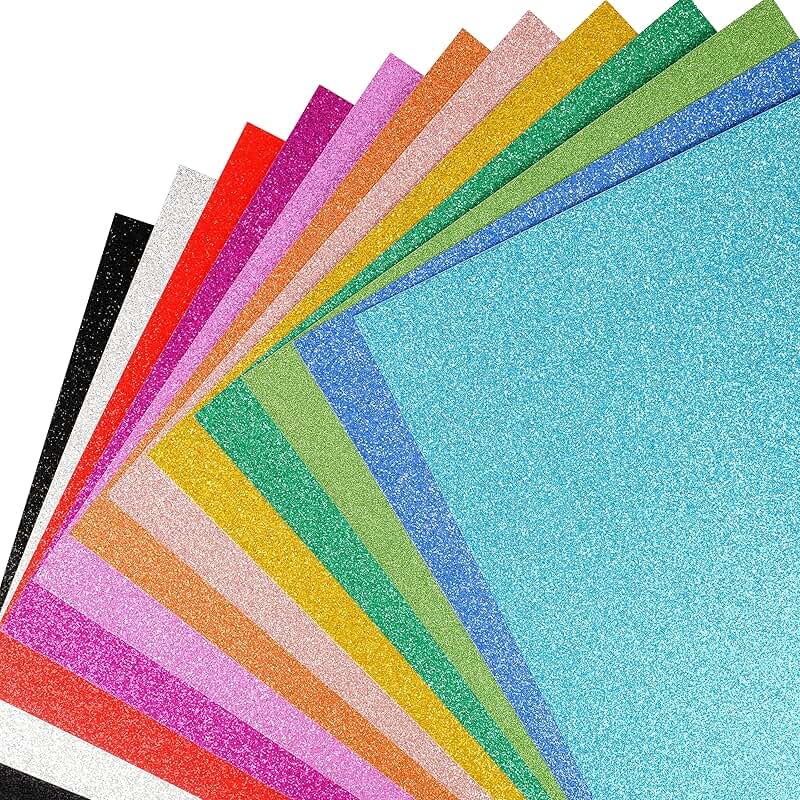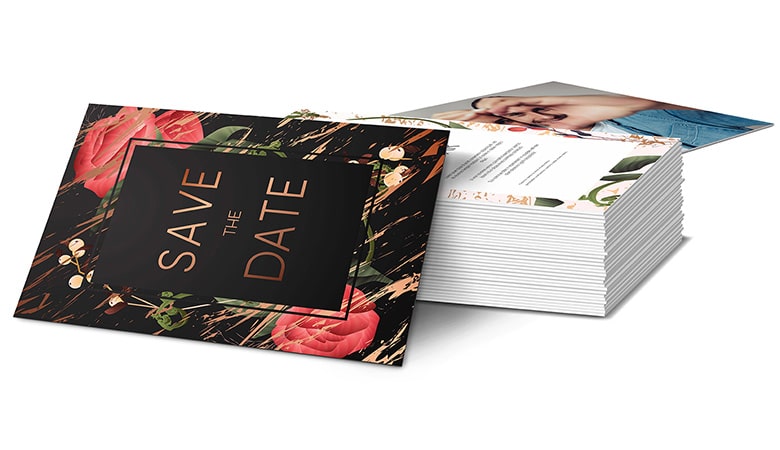Print on Cardstock Paper is versatile, sturdy, thicker, and more durable than standard printing paper. It is widely used for projects requiring higher-quality, sturdier material, such as business cards, invitations, greeting cards, scrapbooking, and presentation covers. Its robust nature makes it ideal for anything demanding a premium finish and added weight for aesthetic appeal and functionality. Whether you’re a hobbyist working on DIY projects or a professional seeking high-quality prints for marketing materials, Cardstock is a go-to option.
Importance of Achieving Professional Quality Prints
The quality of printed materials can significantly impact the impression they leave. A professional-looking print can elevate a project, whether it’s for personal use, a business presentation, or a creative endeavor. Achieving sharp, vibrant, and professional Paper Grocery Bags prints on Cardstock enhances the overall look of your materials. It conveys a sense of attention to detail and high quality. Businesses must ensure that printed materials reflect the brand’s professionalism and commitment to excellence.
Purpose of the Blog Post
This blog post aims to explore the nuances of printing on cardstock paper. We will walk you through the types of Cardstock available, the best printer options for high-quality prints, and actionable tips for achieving professional results. Whether printing can you print on cardstock invitations for an event, marketing materials for your business, or creating beautiful art prints, this guide will help you master cardstock printing and ensure your projects stand out with a polished finish.
Definition and Characteristics of Cardstock
Cardstock, also known as cover stock or pasteboard, is a paper product that stands out due to its thickness and weight. Typically, Cardstock weighs between 50 to 110 pounds (measured in pounds per 500 sheets) or 135 to 300 GSM (grams per square meter), depending on its thickness. It is more flexible than cardboard but sturdier than brown paper bags regular paper, JK Copy Paper balancing durability and usability. Its sturdiness makes it suitable for prints that require resilience, such as greeting cards, posters, and business cards. The texture of Cardstock can range from smooth to textured, offering additional design flexibility for your projects.
Different Types of Cardstock Available
Cardstock comes in a variety of types, finishes, and colors, each suited for different purposes:
- Glossy Cardstock: This type has a shiny finish and is often used for photo prints, promotional materials, and projects requiring vivid colors and high contrast.
- Matte Cardstock: Lacks the reflective surface of glossy can i print on cardstock , making it ideal for materials that need a subdued, professional look, such as formal invitations or resumes.
- Textured Cardstock includes finishes like linen, felt, or canvas. It is used when you want to add an extra tactile element to your prints, such as for wedding invitations or art prints.
- Colored Cardstock: Available in many colors, colored paper bags bags cardstock is often used for creative projects like scrapbooking, crafting, or customizing greeting cards. Each type offers different aesthetic qualities, so it’s important to select the right one based on your project’s specific needs.
Common Applications for Cardstock Printing
11×17 card stock printing is a popular choice for a wide array of printing applications, both personal and professional. Some of the most common uses include:
- Business Cards: The thicker paper makes business cards more durable and professional.
- Invitations: For weddings, birthdays, or events, Cardstock adds a luxurious feel to invitations.
- Marketing Materials: Postcards, brochures, and flyers often use Cardstock for added durability and a more premium feel.
- Art Prints: Cardstock is often used for printing artwork, posters, or custom designs due to its durability and how it holds ink or toner.
- Greeting Cards: Personalized or professional greeting cards are another popular use for Cardstock, as their weight makes the cards feel more substantial. Understanding which type of Cardstock best suits your project can help you achieve a high-quality, professional outcome.
Compatibility of Various Printers with Cardstock
Not all printers are created equal when handling thicker paper like Cardstock. Some printers, especially those designed for high-volume or office use, may not be can i print on cardstock able to print on paper thicker than 80 GSM. However, many inkjet and laser printers can handle thicker paper, such as Cardstock, particularly if the paper feed allows manual adjustment.
- Inkjet Printers: These are generally good for cardstock printing because they can handle different paper thicknesses and provide high-quality color prints. However, they might struggle with extremely can printers print on cardstock thick or textured Cardstock.
- Laser Printers: These are less ideal for glossy or coated Cardstock as the toner may not adhere properly, but they excel at printing on matte and textured Cardstock. Checking your printer’s manual for maximum paper weight capacity is essential before printing on thicker materials.
Recommended Printer Types for Optimal Results
Investing in a printer designed to handle heavier paper is wise if you frequently print on Cardstock. Here are some printer types and models that are commonly recommended for cardstock printing:
- Canon Pixma Series: These inkjet printers are known for producing high-quality photo prints and are ideal for glossy or semi-gloss Cardstock.
- Epson EcoTank Series: These inkjet printers are great for their versatility and ability to print high-resolution images on various types of Cardstock.
- HP LaserJet Pro: This laser printer can handle thicker, 11×17 card stock printing matte Cardstock and is perfect for business materials that require sharp text and professional presentation.
- Brother HL-L8360CDW: A laser printer that offers solid performance for printing on heavyweight paper, including textured Cardstock.
Selecting the Right Cardstock Weight and Finish
One of the most critical steps in achieving a professional-quality print is selecting the right cardstock weight and finish. The weight you choose will depend on the project:
- A thicker cardstock (around 100-110 lbs or 270-300 GSM) gives a durable, premium feel for business cards.
- Cardstock weighing 80-100 lbs (216-270 GSM) is suitable for invitations or greeting cards.
- For flyers or brochures, slightly lighter Cardstock (65-80 lbs or 175-216 GSM) is often used to balance durability and cost. The finish is also important. Glossy finishes enhance vibrant colors and contrast, making them ideal for photo-heavy prints. In contrast, matte finishes are more appropriate for formal documents or designs that require paper bag shopping bag readability without glare.
Adjusting Printer Settings for Cardstock Printing
Printer settings play a crucial role in producing high-quality prints on Cardstock. If your printer offers specific settings for different paper types, select the option for thicker paper. Here are some additional tips for adjusting your printer:
- Paper Type Selection: In the printer’s settings menu, select “heavy paper” or “cardstock” to ensure the printer adjusts its settings to accommodate the thicker material.
- Feed the Cardstock Manually: Some printers have manual feed options for thicker paper, which can help prevent jams and ensure a smoother printing paper tote bag process.
- Slow Down the Printing Speed: Many printers offer options to slow down the printing speed, which can improve the ink distribution and ensure better coverage on thicker paper. These simple adjustments can significantly affect the final quality of your printed project.
Importance of High-Resolution Images and Designs
Printing on Cardstock often requires high-resolution images and designs to avoid pixelation or blurriness. Whether you’re printing a photo, logo, or intricate design, using high-resolution images (300 DPI or higher) will result in sharper, clearer prints. Low-resolution images may appear grainy or blurry, especially on textured Cardstock, which can detract from the overall professional look of your project.
Techniques for Ensuring Even Ink Distribution
Ensuring even ink distribution is key to avoiding streaks, blotches, or inconsistent colors on Cardstock. Here are a few techniques to help with even ink coverage:
- Use High-Quality Ink or Toner: Low-quality inks or toners can result in uneven prints or color fading over time. Invest in reputable brands that are known for their print quality.
- Perform Printer Maintenance: Regularly clean the printheads and run maintenance routines to avoid clogs and streaks.
- Test Print: Before printing a large batch, always do a test print to ensure the ink distributes evenly across the Cardstock. Adjust the printer settings or clean the printhead if you notice streaking or uneven coverage. By paying attention to these details.

Conclusion
Printing on Cardstock can be a game-changer for personal and professional projects that require durability and high-quality finishes. Throughout this blog, we explored the various types of Cardstock available, including glossy, matte, and textured options. We discussed their common uses for everything from business cards to art prints.
We also addressed whether it’s possible to print on Cardstock and provided a guide for choosing the right printer for the job, with recommendations like inkjet and laser printers ideal for different finishes. Moreover, we covered important tips for achieving professional quality prints, from adjusting printer settings to selecting the right paper weight and finish, ensuring even ink distribution, and using high-resolution images for the best possible results.
Whether you’re a business owner looking to enhance your marketing materials or a creative hobbyist exploring DIY projects, experimenting with cardstock printing can open new doors for high-quality results. By understanding the nuances of different cardstock types and how to adjust your printer for optimal performance, you’ll be better equipped to tackle any project with confidence. Don’t be afraid to experiment with different textures, finishes, and design elements to achieve the perfect balance between functionality and aesthetics in your prints.
The importance of professional quality prints cannot be overstated. High-quality prints in personal and professional settings reflect care and professionalism that leaves a lasting impression. Cardstock’s durability and versatility make it the ideal medium for creating materials that look great and withstand the test of time. Whether you’re crafting a memorable wedding invitation, a standout business card, washable paper bags or an art piece for display, Cardstock offers endless possibilities for creativity and quality. With the right tools, techniques, and attention to detail, you can achieve professional-level results that elevate your projects.
FAQ
Is Cardstock Paper Good For Printing?
Regular paper is good for printing everyday recipes or casual documents. However, when it’s a special event like the birthday of a loved one, Valentine’s Day, or a festive Christmas party, you should definitely opt for cardstock paper.
What is The Best GSM For Cardstock?
Lightweight Cardstock (90-120 gsm): Ideal for everyday printing tasks, such as flyers and brochures. Medium-weight Cardstock (121-200 gsm): Great for business cards, postcards, and greeting cards.
Do You Need A Special Printer for Cardstock?
Laser- Laser printers use a toner cartridge filled with powder and heat to create a virtually waterproof, plastic-like ink that sits on top of the paper. Inkjet printers are especially successful at printing on textured card stocks.
Can Inkjet Print on Cardstock?
You can achieve great printing results on quality, thick, heavy cardstock using an inkjet printer. And yes, you can save some money too! Inkjet printing is often an absolutely viable alternative to professionally designed, store-bought, and third-party printed cards.


